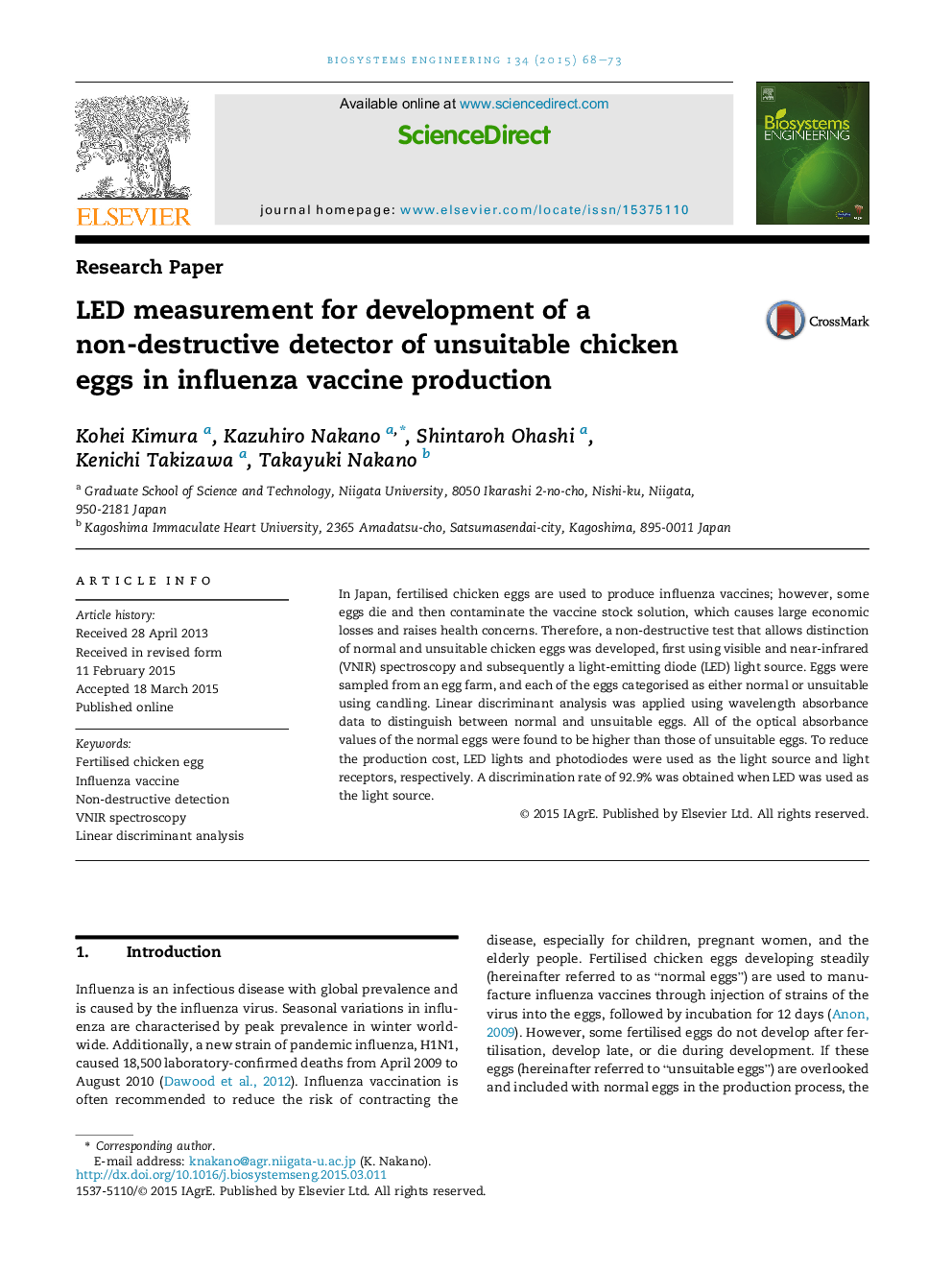| Article ID | Journal | Published Year | Pages | File Type |
|---|---|---|---|---|
| 8055166 | Biosystems Engineering | 2015 | 6 Pages |
Abstract
In Japan, fertilised chicken eggs are used to produce influenza vaccines; however, some eggs die and then contaminate the vaccine stock solution, which causes large economic losses and raises health concerns. Therefore, a non-destructive test that allows distinction of normal and unsuitable chicken eggs was developed, first using visible and near-infrared (VNIR) spectroscopy and subsequently a light-emitting diode (LED) light source. Eggs were sampled from an egg farm, and each of the eggs categorised as either normal or unsuitable using candling. Linear discriminant analysis was applied using wavelength absorbance data to distinguish between normal and unsuitable eggs. All of the optical absorbance values of the normal eggs were found to be higher than those of unsuitable eggs. To reduce the production cost, LED lights and photodiodes were used as the light source and light receptors, respectively. A discrimination rate of 92.9% was obtained when LED was used as the light source.
Related Topics
Physical Sciences and Engineering
Engineering
Control and Systems Engineering
Authors
Kohei Kimura, Kazuhiro Nakano, Shintaroh Ohashi, Kenichi Takizawa, Takayuki Nakano,
